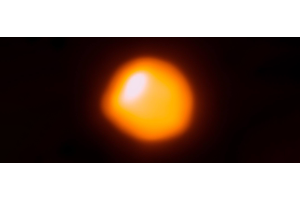
In this video Teagan goes over some of the beautiful celestial objects you can see in the month of December, 2021.

Image source: Robert Gendler
M45 - The Pleiades
- Type: Open Star Cluster
- Constellation: Taurus
- Distance: 490 light-years
- Magnitude: 1.2
- Apparent Diameter: 120'
When it comes to star clusters, there’s no finer example in the entire night sky than the Pleiades. It’s visible throughout the winter months and can be easily found by following the three stars of Orion’s belt upwards to Aldebaran, the red eye of Taurus the Bull. Continue the line upwards and you’ll come to the Pleiades.
It appears as a tiny group of six to ten stars with the naked eye, but binoculars will give you an outstanding view. Its brightest stars form a pattern like a mini dipper, while the entire cluster appears to shine like tiny sapphires against a backdrop of diamond dust.
As the cluster spans two degrees of sky, you’ll need to use your lowest powered eyepiece - perhaps no more than about 30x or 40x - to observe it through a telescope. Look out for a coppery double in the bowl of the little dipper and a tiny trio of stars next to Alcyone.
OUR NEAREST NEIGHBORS
Mercury becomes visible for the last week of the year and will pass Venus from the 27th to the 29th, about three weeks after a crescent Moon hangs below Venus on the 6th. The Moon then appears below Saturn the following night, which remains visible for a few hours after sunset. Jupiter is visited by the Moon on the 8th and can be observed for a little while after twilight ends. You’ll need binoculars to see Uranus and Neptune; Neptune is visible until around mid-evening, while Uranus remains very well-placed after reaching opposition last month. Mars is visible low in the southeast shortly before the dawn. It passes Antares during the last three or four days of the year, with a waning crescent Moon appearing between and above the pair on New Years’ Eve. The Moon itself turns new on the 4th and then full on the 18th.

Image credit: Dean Romwe
The Geminid Meteor Shower
The year’s Geminids reach their maximum on the evening of the 13th to 14th, and while the shower is one of the best, this year’s is hampered by a waxing gibbous Moon. Try your luck in the hours before the dawn of the 14th after the Moon has set.

Image credit: astropixels.com
Beta Persei - Algol
Algol varies in magnitude from 2.1 to 3.4 every 2.87 days, making it the easiest variable star in the sky to observe. Use Gamma Andromedae (mag 2.1), Epsilon Persei (mag 2.9), and Rho Persei (mag 3.4) as comparison stars.

Image credit: Wikisky
M34
A fine open star cluster located within the same binocular field of view as Algol. A low-powered eyepiece will show a sparse scattering of stars similar to M44, the Beehive Cluster.

Image credit: NASA / ESA / Bond et al. / Gladys Kober, NASA & Catholic University of America.
NGC 1535 - Cleopatra’s Eye
You’ll find this bright planetary just 4 degrees to the east of the star Zaurak in Eridanus. Small telescopes at about 100x will show a small, bright blue, hazy disc.
STELLAR CONCEPTS
Fireball: We’ve all seen shooting stars, but how many of us have seen a fireball? A fireball is a particularly bright meteor (about the same brightness as Venus, or brighter) that can often last for several seconds and leave a smoke trail in its wake. Regular meteors are often about the size of an apple seed or gravel and consequently burn up in the upper atmosphere. A fireball can be the size of a golf ball and may result in a meteorite reaching the ground. This month’s meteor shower, the Geminids, is known for producing some bright, colorful meteors, so there’s a good chance of spotting a fireball too!
This Article was Last Updated on 07/26/2023











